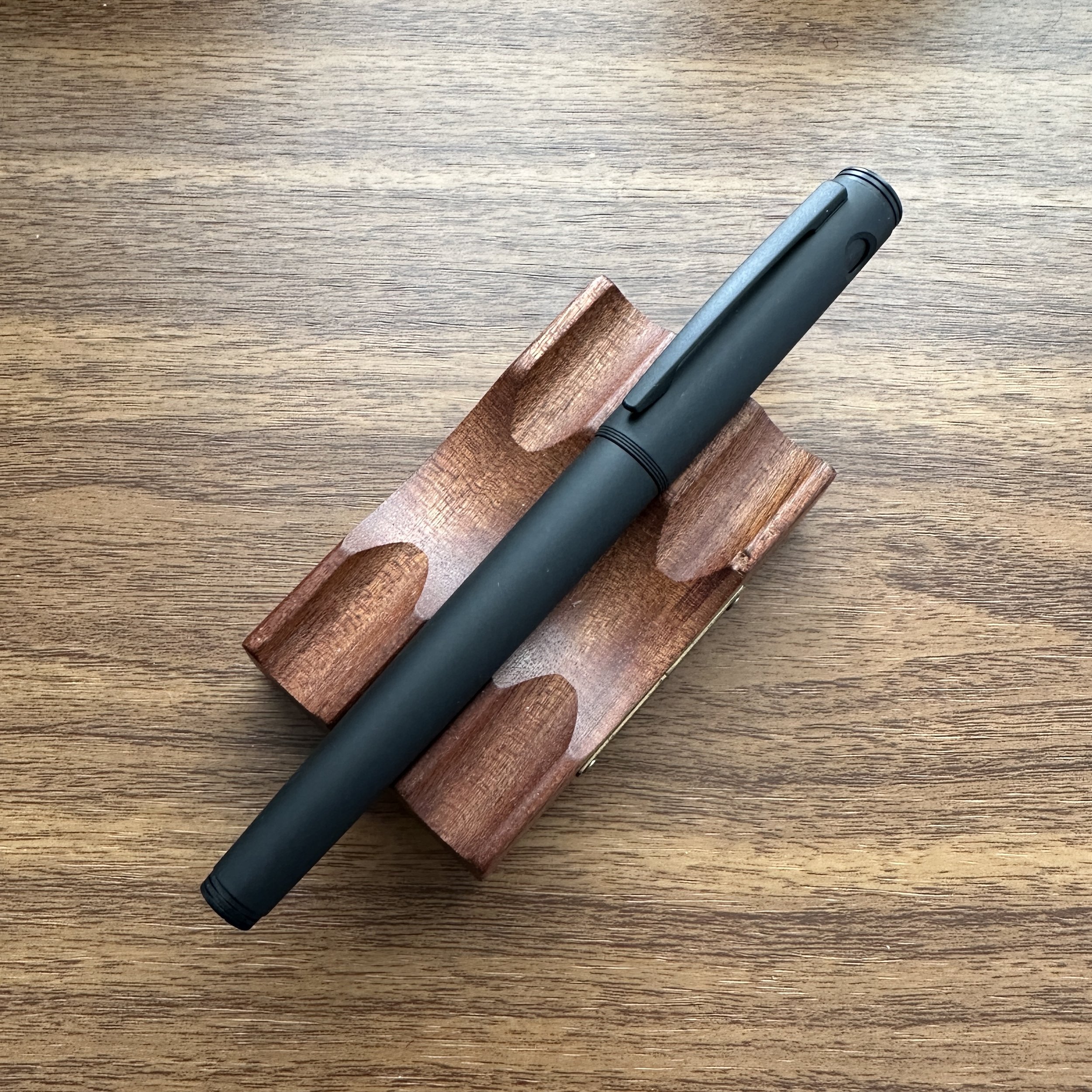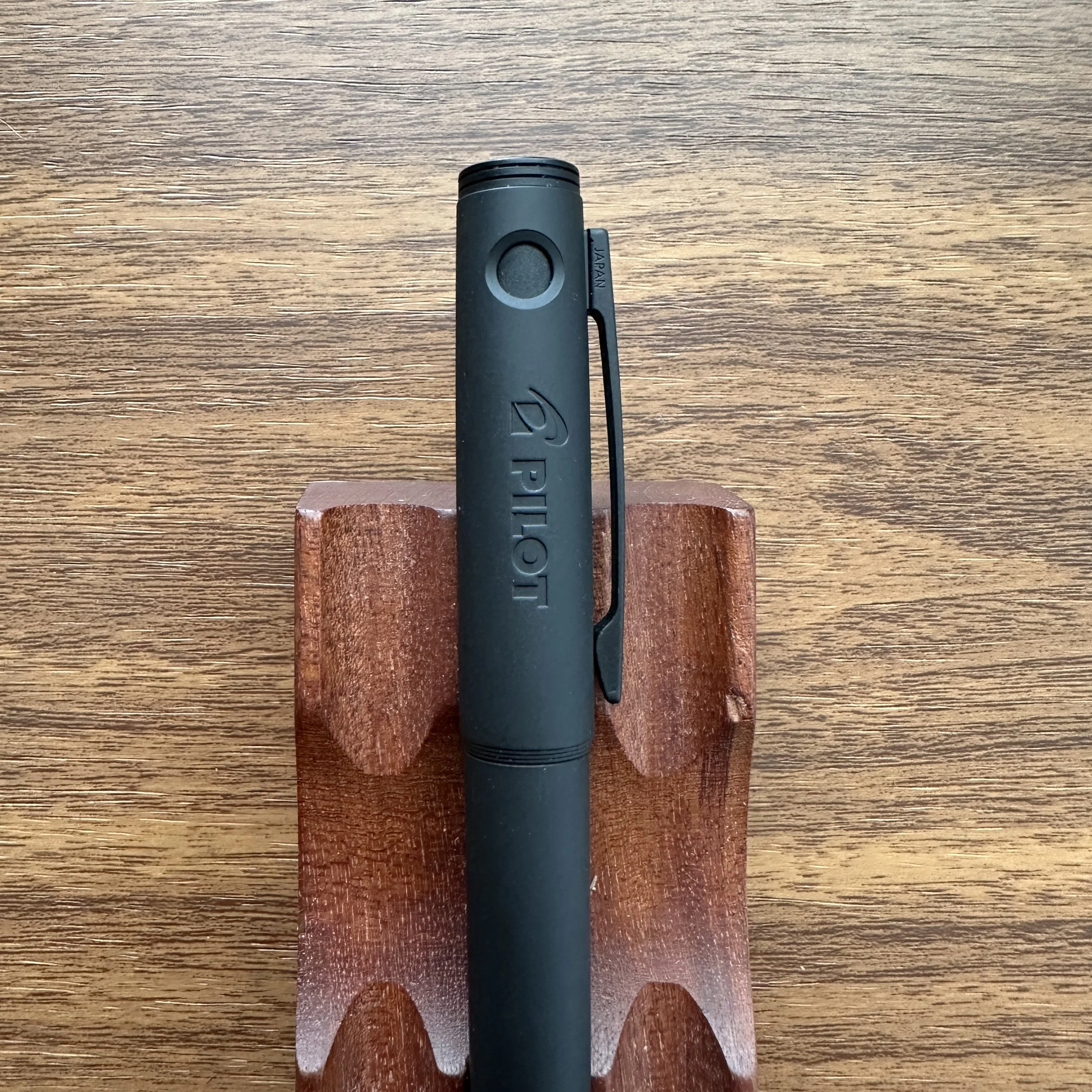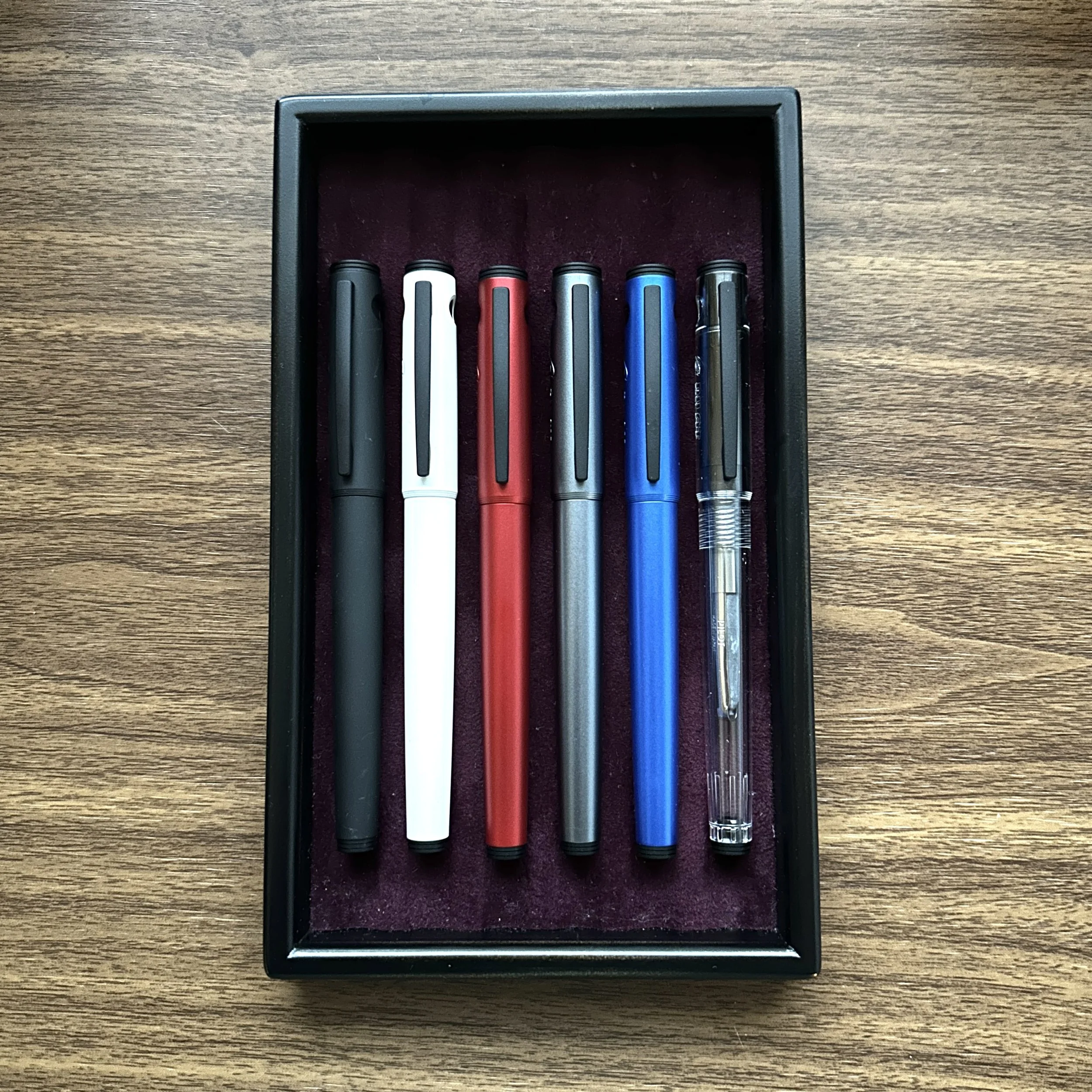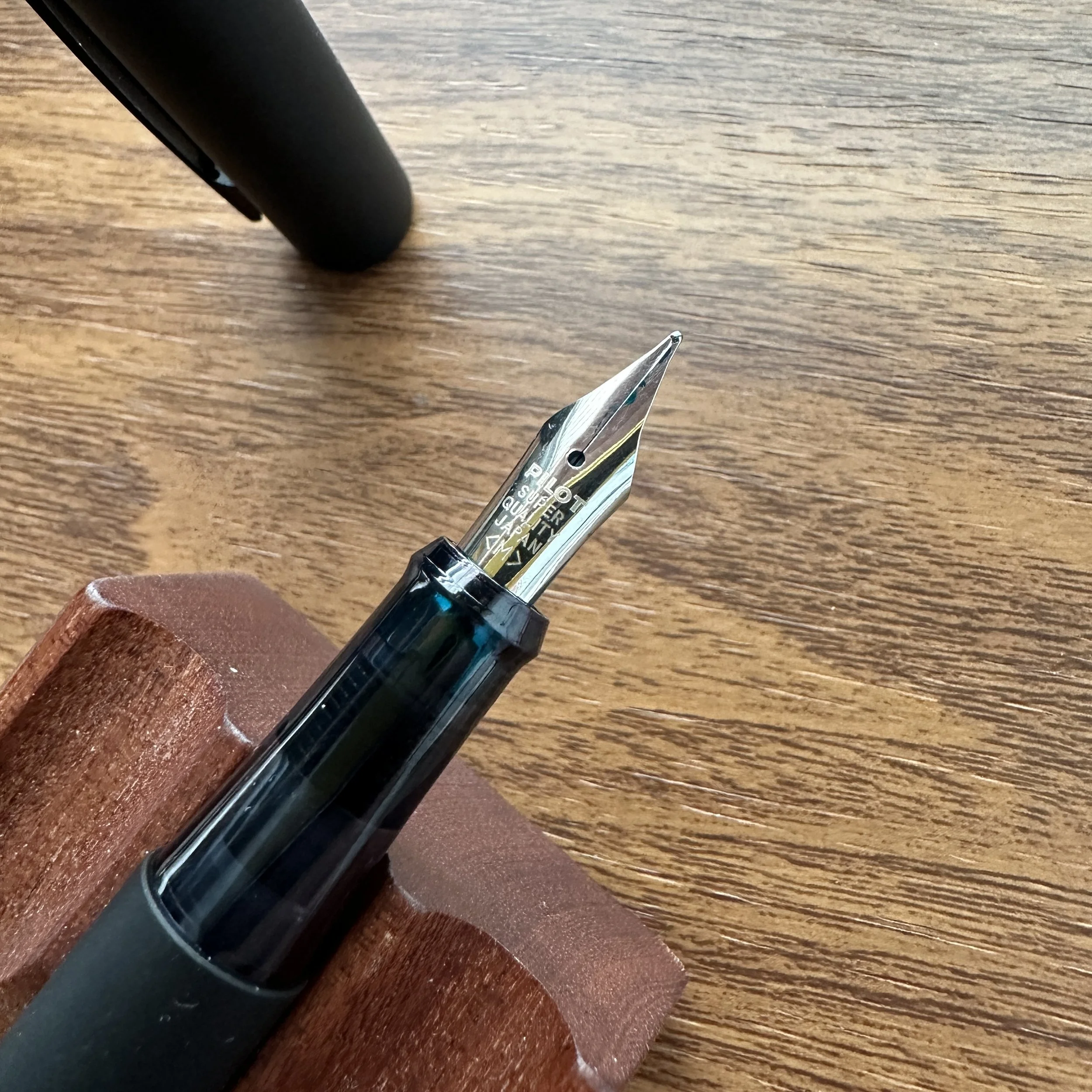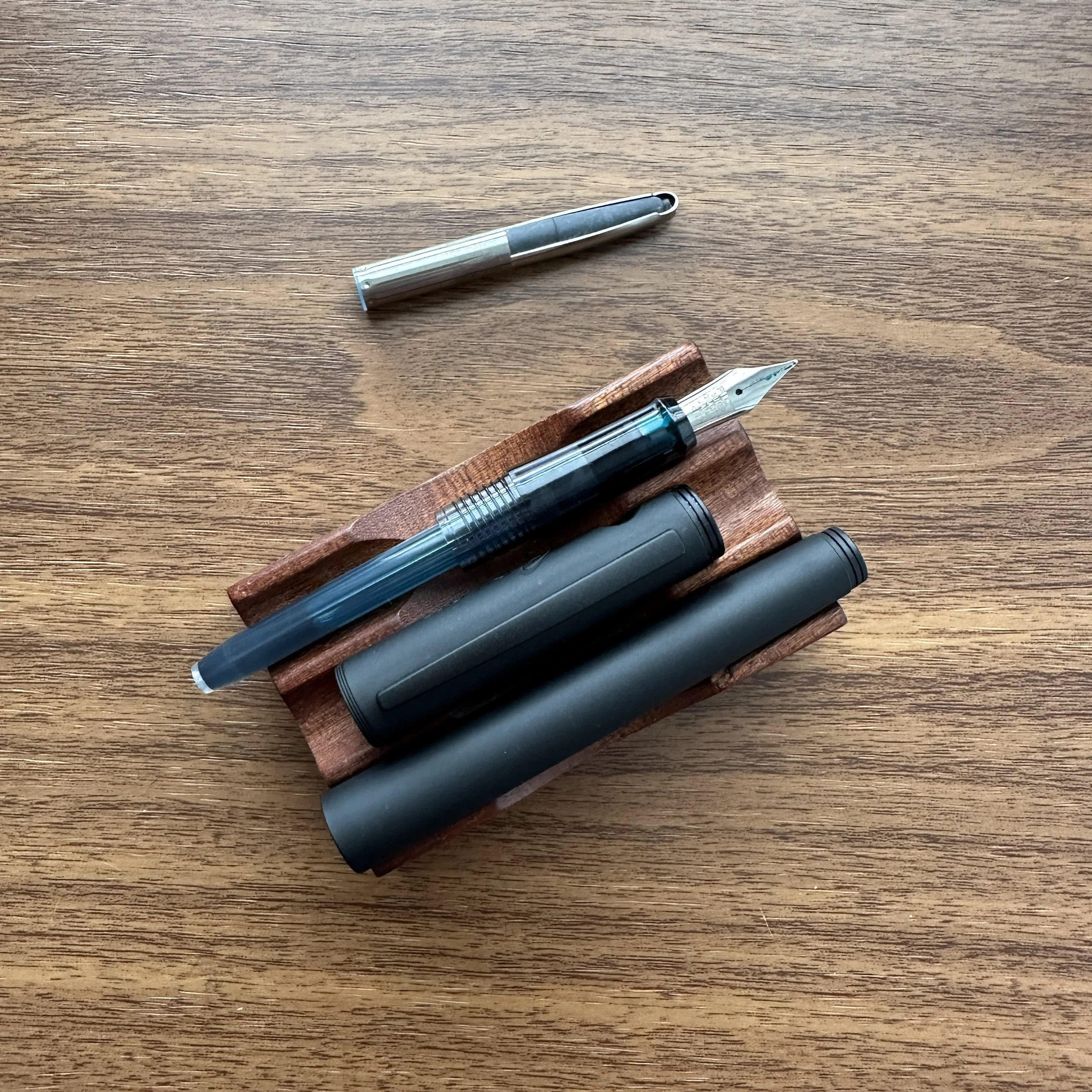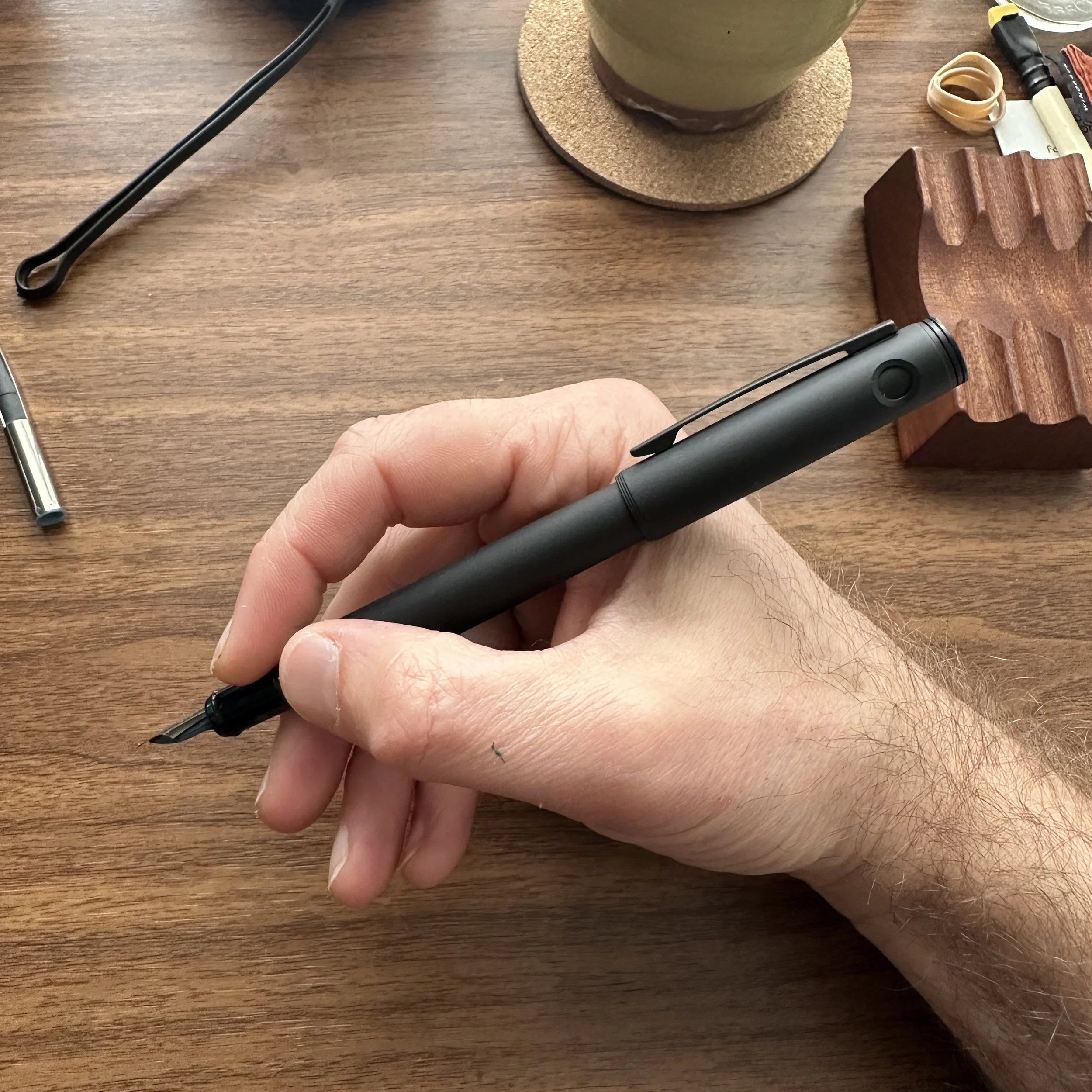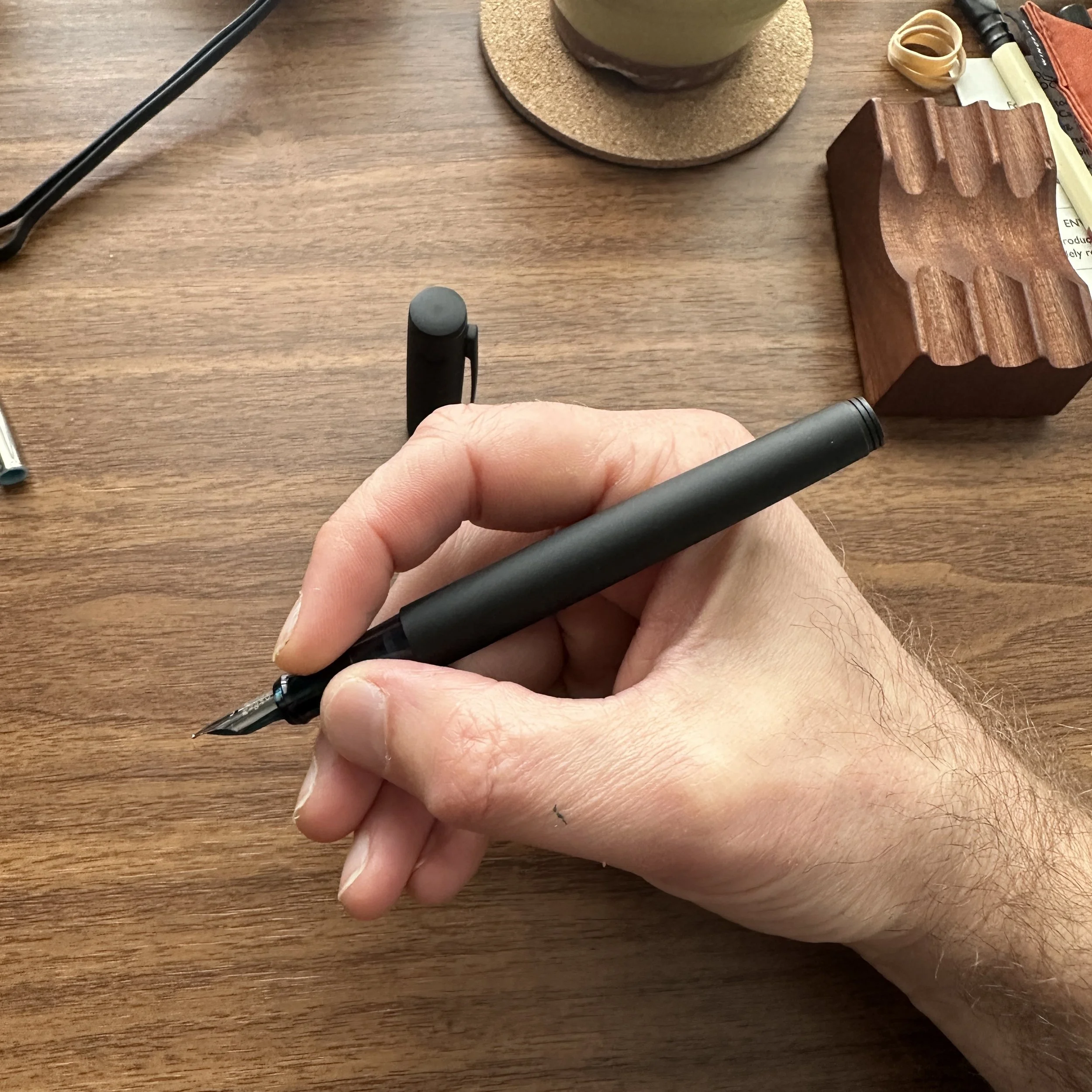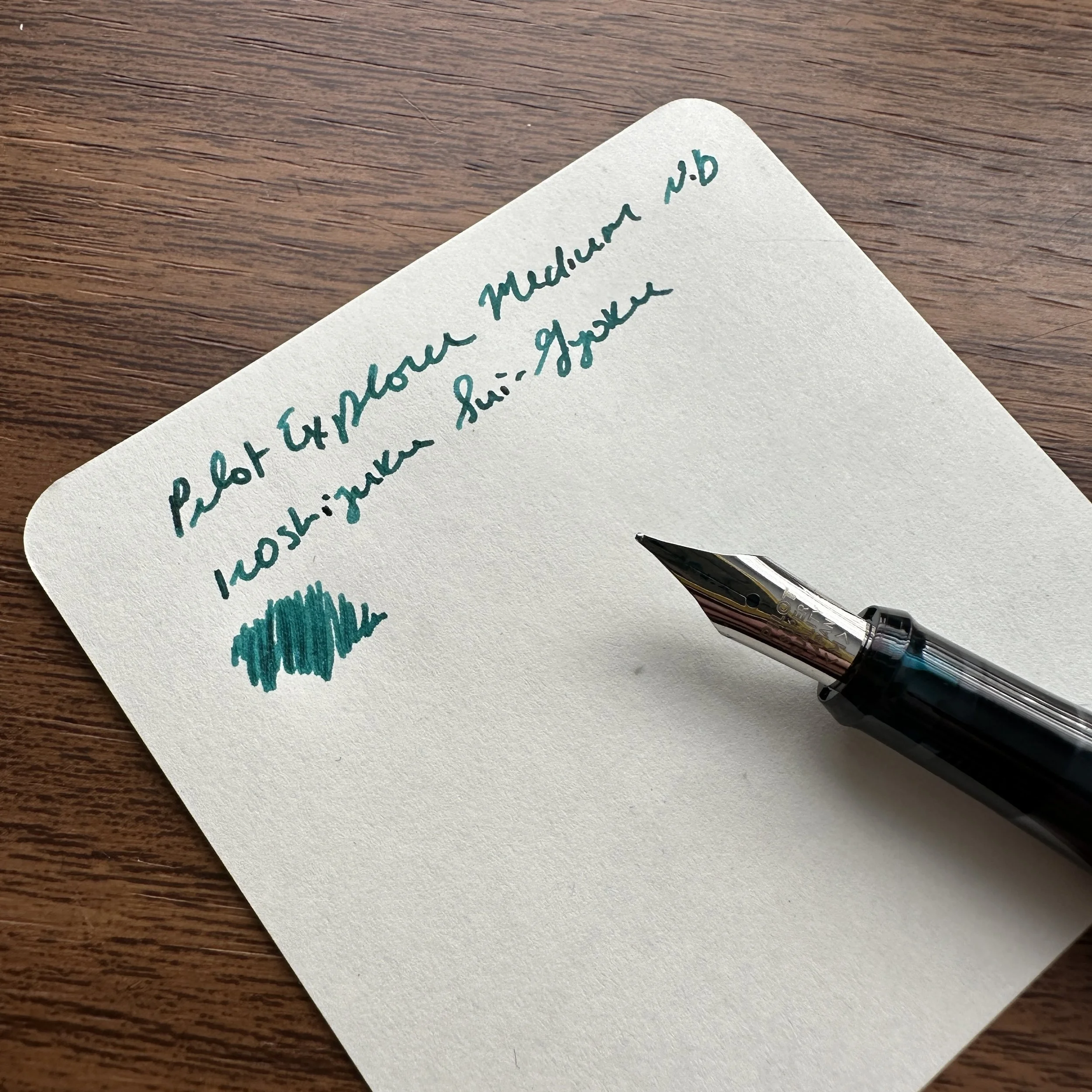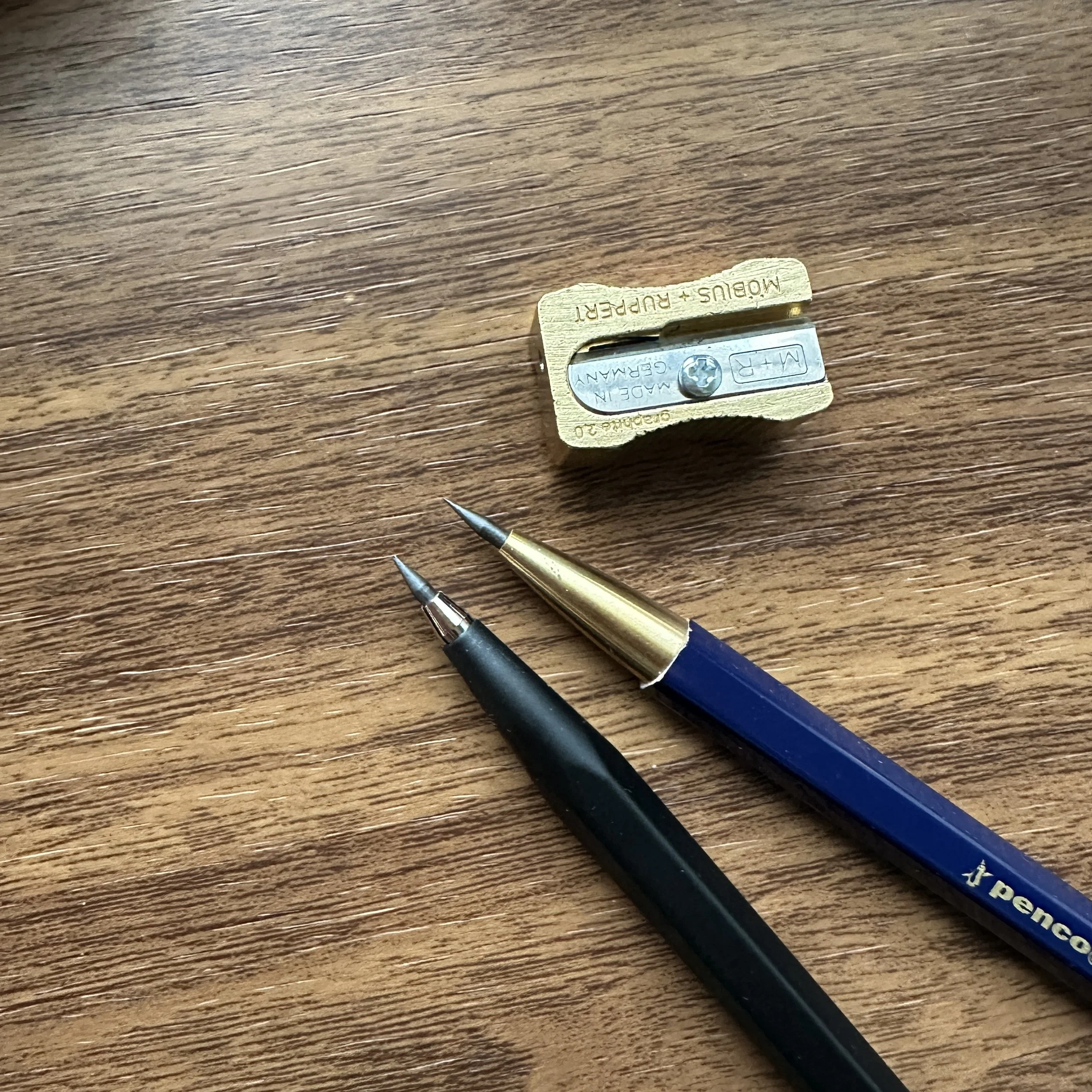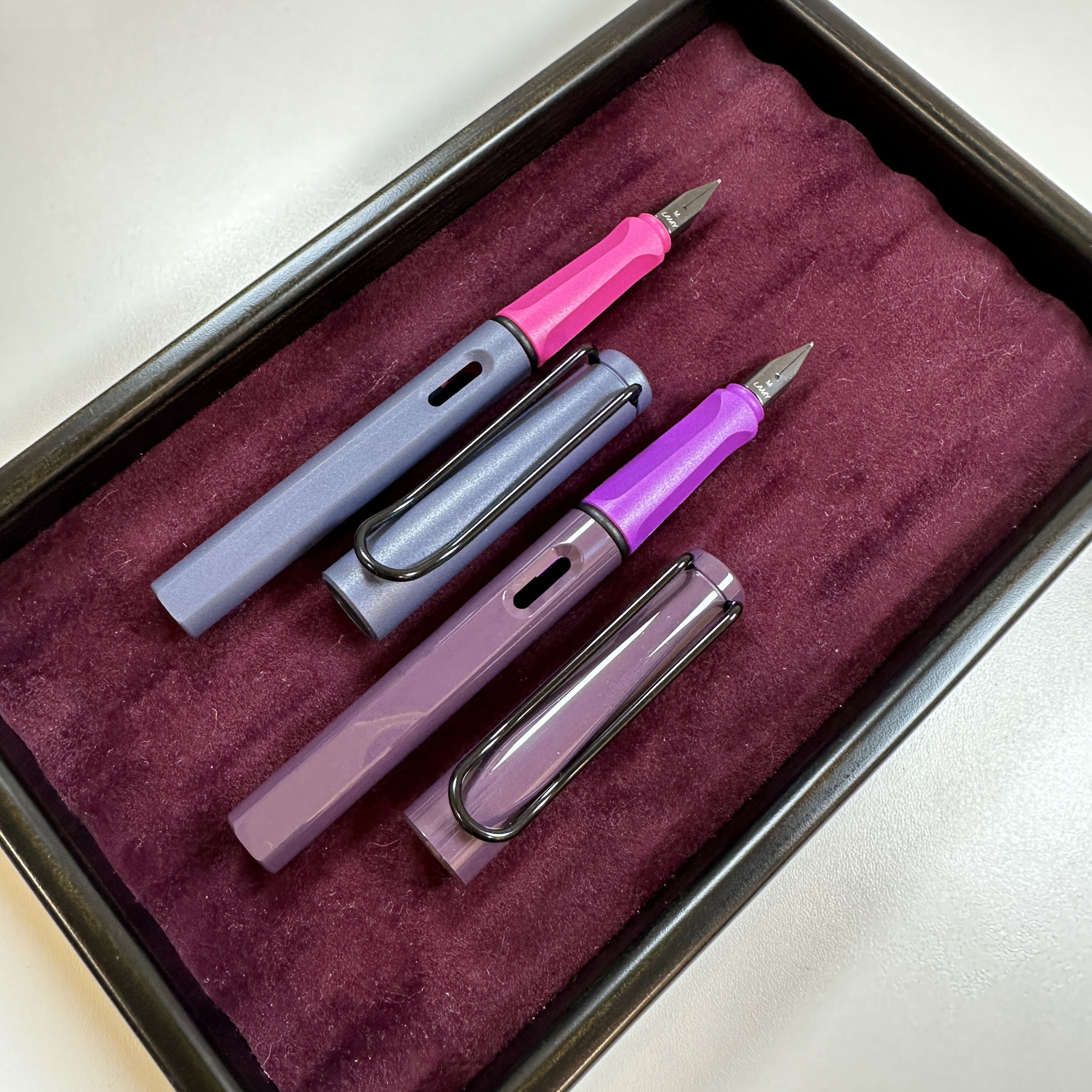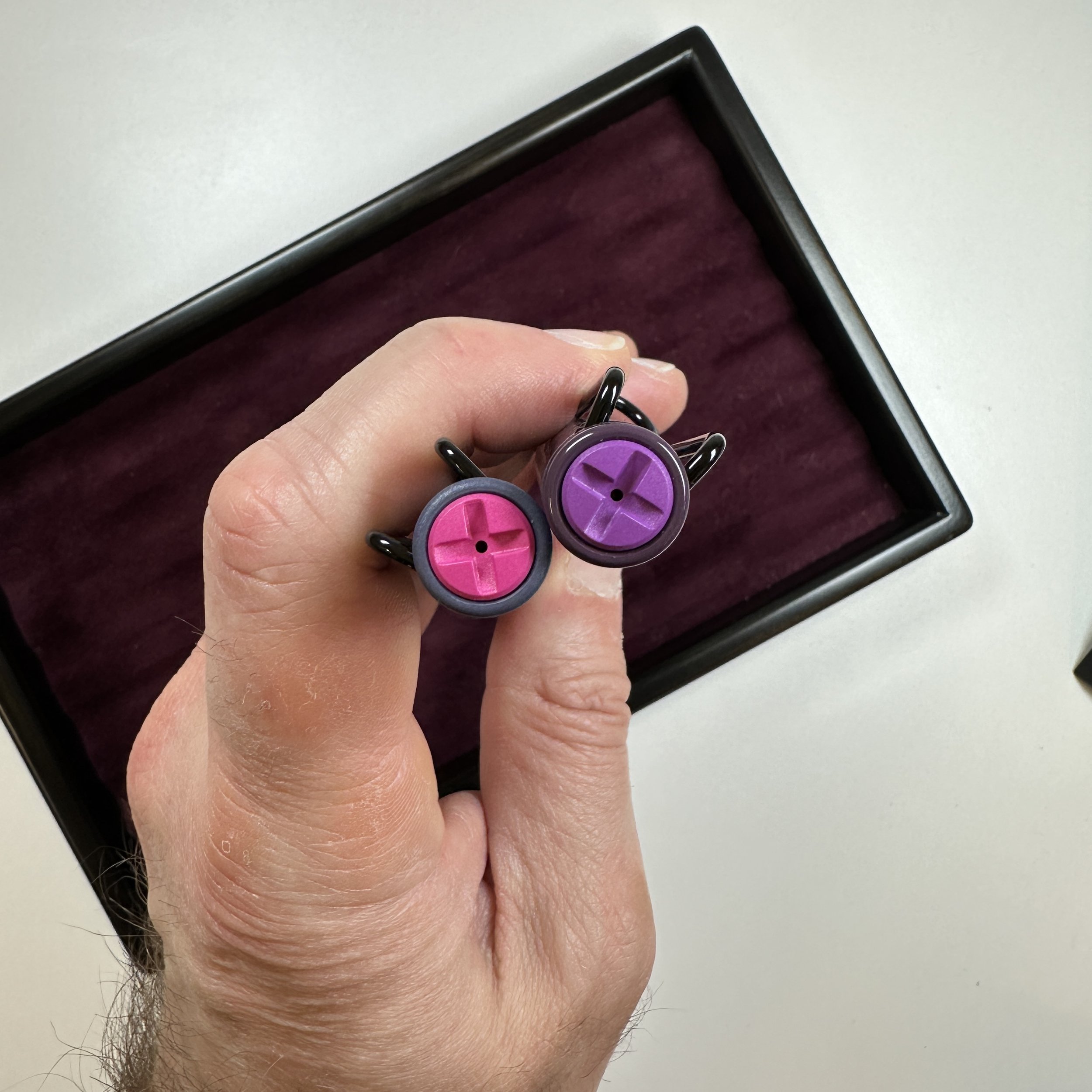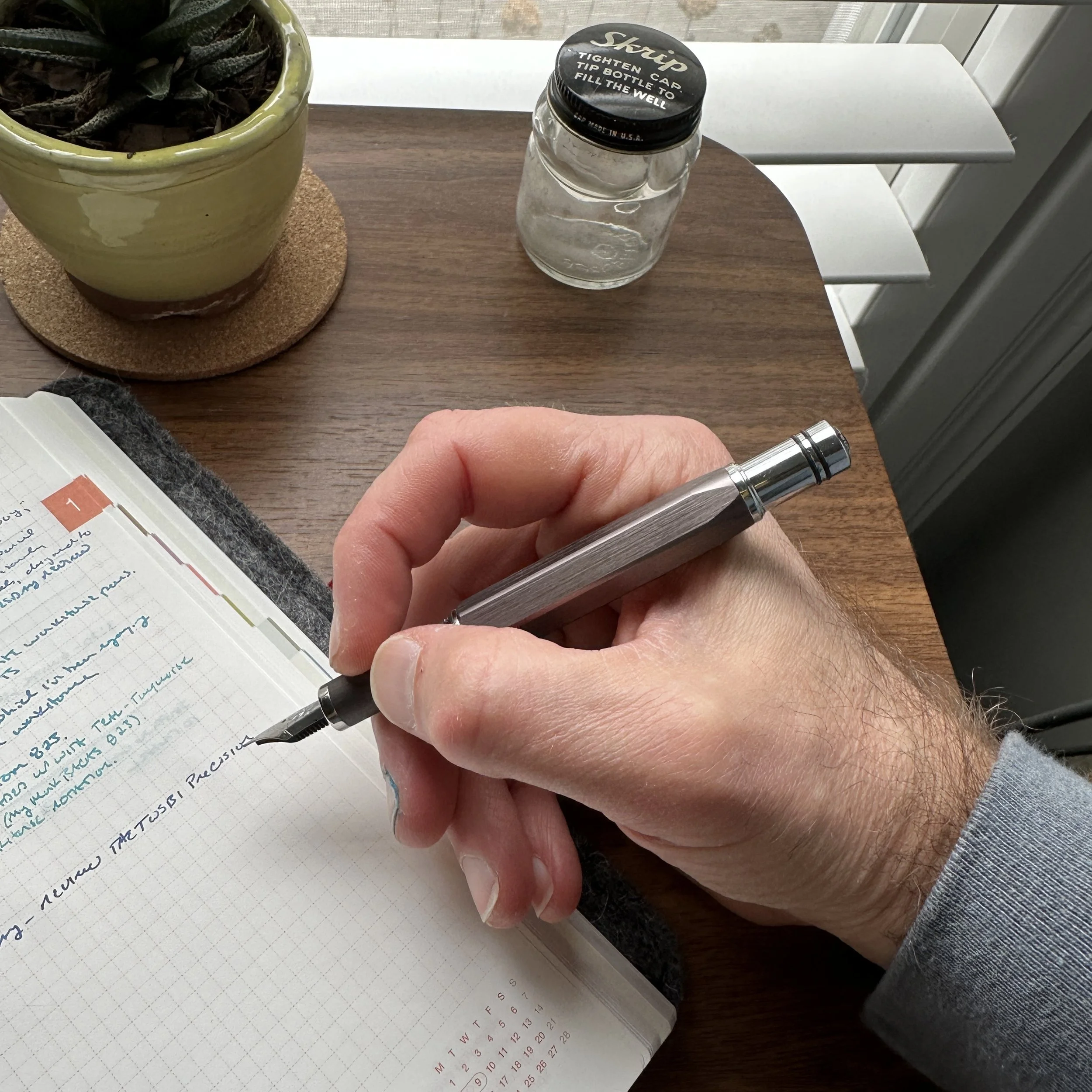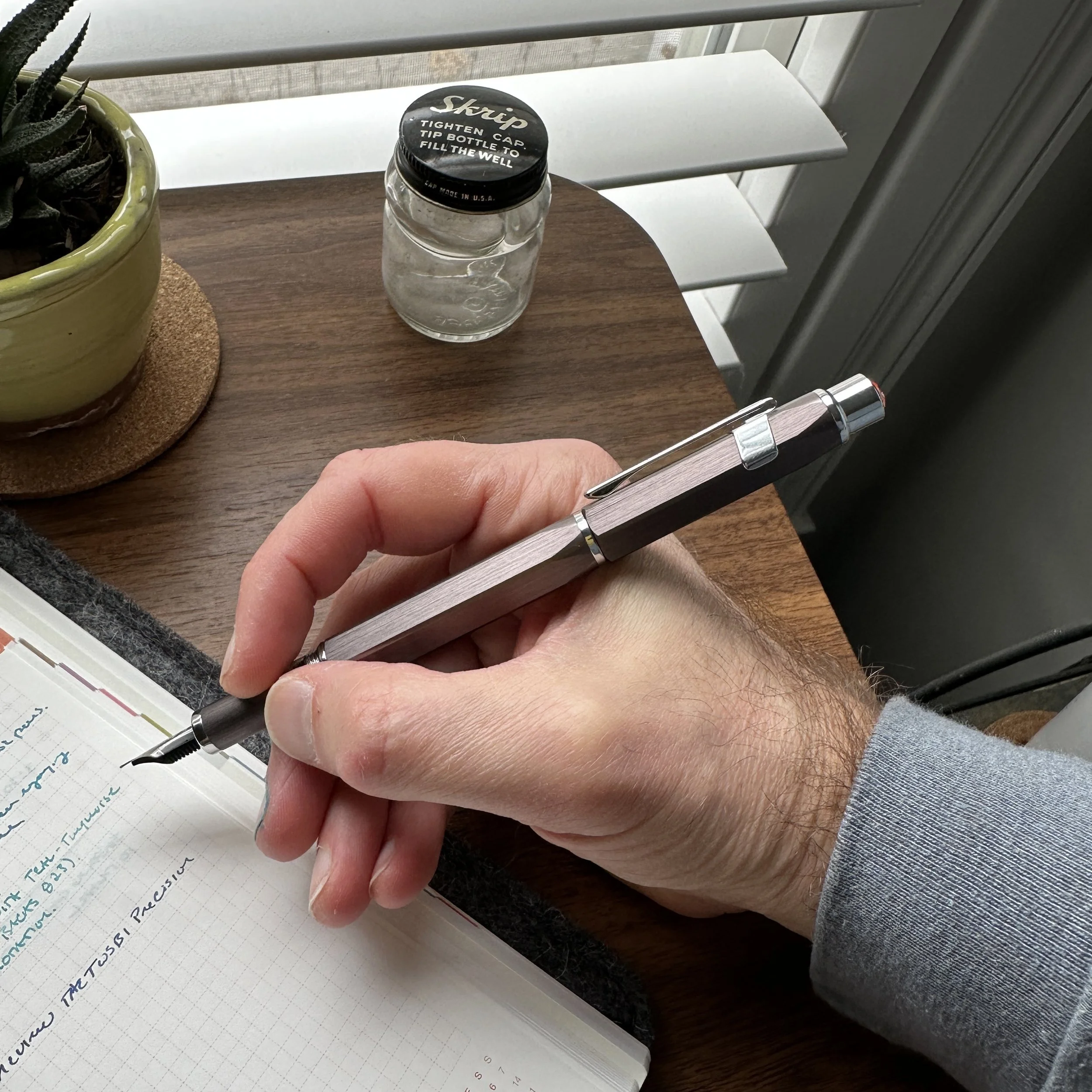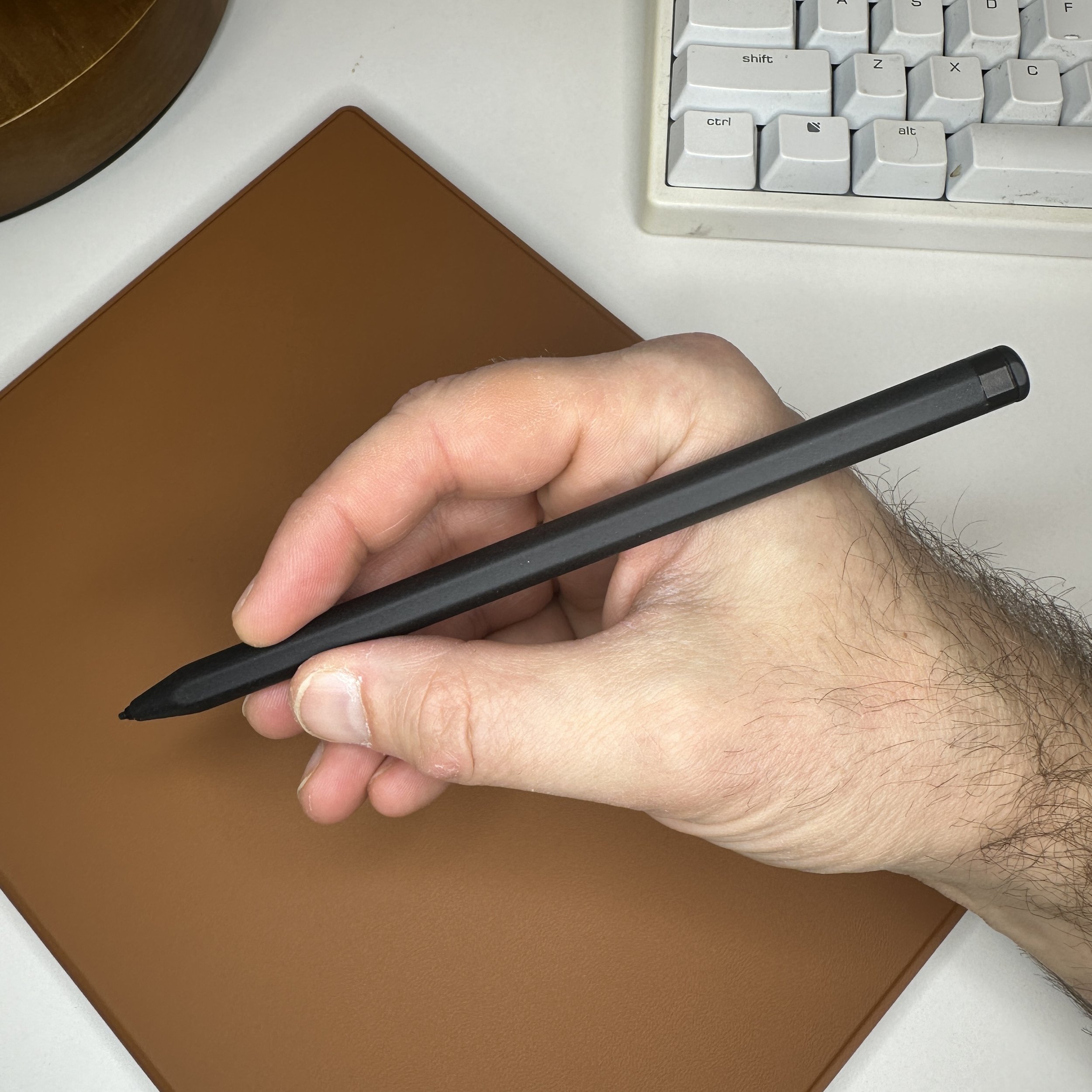If I've learned one thing over the past 10 years of writing The Gentleman Stationer, it's how difficult it is to make a consistently good fountain pen at the lower end of the price spectrum. Often companies will release a pen with an excellent nib but a flimsy body, or a decent looking pen that doesn't write well (or doesn't actually write at all). It's still somewhat uncommon to find a pen at the $25-and-under price point that delivers the entire package. While new users and/or those looking for an inexpensive daily writer certainly have had options, the addition of the Explorer fountain pen to Pilot's lineup was a welcome addition!
While I’d probably prefer no logo, at least it matches the underlying pen color. On an inexpensive pen I’m more tolerant of visible branding.
Wait, Doesn't the Pilot Explorer Already Exist?
While your mind isn't playing tricks on you, the "old" Pilot Explorer is long gone. Pilot made a 1990's-era retractable rollerball that I'm pretty sure I used for a few years in high school after my parents bought a case of them. Discontinued long ago, Pilot has resurrected the "Explorer" name for this new fountain pen. While there is some passing resemblance in the overall aesthetic, including the incorporation of a somewhat prominent Pilot logo, these are completely different products.
I chose the matte black version for my first Explorer, but every time I unpack a new shipment or set up for a pen show, I want a grey, then a blue, then a red....
Where Does the Pilot Explorer Fit in the Current Pilot Lineup?
The Pilot Explorer fountain pen sits alongside the Pilot Metropolitan in the $20-30 price bracket. Both pens share a nearly identical MSRP and you can typically find them priced within a few dollars of each other. That said, I don't get the feeling that Pilot intends for these pens to "compete". The Metropolitan features a more modern design, while the Explorer has all the hallmarks of a classic "Workhorse Pen" such as understated looks, lightweight construction, a reliable nib, and a comfortable section that should work with most grips. But despite a relatively conservative design intended to appeal to the broadest possible audience, the Explorer still looks sharp. At the recent Arkansas Pen Show, I had a table full of Pilot Explorers sitting alongside Vanishing Points and Custom 74s, and the Explorers held their own. The red and grey pens caught the eye of nearly everyone who came by the table.
The translucent section is quite comfortable, and Pilot makes an excellent stainless steel nib.
Nib and Writing Experience
The Explorer is a Pilot pen, so it writes well out of the box. That's expected. What surprised me the most was the level of comfort. Pilot clearly designed the Explorer to be an all-day-every-day writer. Posted or unposted, it's one of the more comfortable fountain pens I've ever used. (Posting the cap adds little to no weight.) The nib is the same stainless steel nib Pilot uses on other pens, including the Metropolitan, the Kakuno (minus the smiley face), and the Prera, and is available in either a fine or medium.
Personally, I prefer to refill my Pilot cartridges using a syringe, but the press converter included in the box works perfectly well. It also makes it very easy to clean the pen by flushing it with water.
Unsurprisingly, the Pilot Explorer uses a cartridge-converter filling system. The pen ships with both a cartridge and a converter in the box, allowing you to use bottled ink without having to shell out extra money for the converter. The converter is the same press-plate sac converter that ships with the Metropolitan and certain other lower-cost Pilot pens. That said, if you want to upgrade your converter experience, the Explorer's barrel is long enough to accommodate other options, including the higher capacity CON-70 with the pump filling mechanism.
Takeaways and Where to Buy
I love the Explorer. As someone who finds the Metropolitan somewhat awkward to use due to the step-down on the barrel, I welcome this new arrival. Both pens use the same nib and make excellent everyday writers, but the designs complement each other by appealing to different users. More traditionally "professional" than the Kakuno, the Explorer won't look out of place at the office, and it's inexpensive enough that you shouldn't hesitate to leave it on your desk at work or buy a few to keep inked up and at the ready if, like me, you have several locations that you rotate between during a typical week.
This pen writes on the wet side, especially with Pilot’s high-capacity cartridge. The ink shown here is Pilot Iroshizuku Sui-Gyoku, a new favorite.
At $25, the Explorer competes with the TWSBI Swipe and offers a similar value proposition. I would recommend the Explorer to those looking for a more traditional design, and while the Swipe isn't heavy at all, the Explorer is remarkably lightweight. It was a complete no-brainer decision for us to stock both pens in our own shop, and we currently have the Explorer available for purchase, in a range of colors and both the fine and medium nib sizes.
The Gentleman Stationer is supported entirely by purchases from the TGS Curated Shop and pledges via the TGS Patreon Program.
